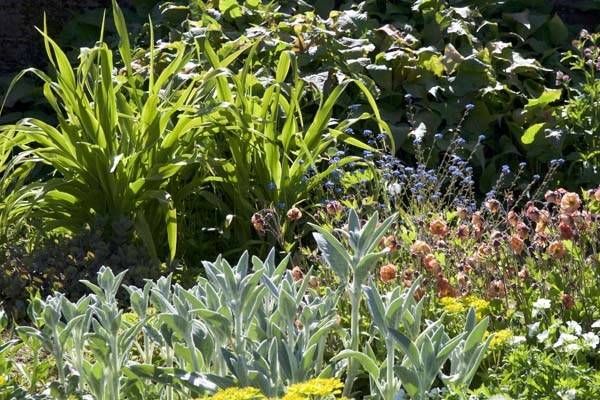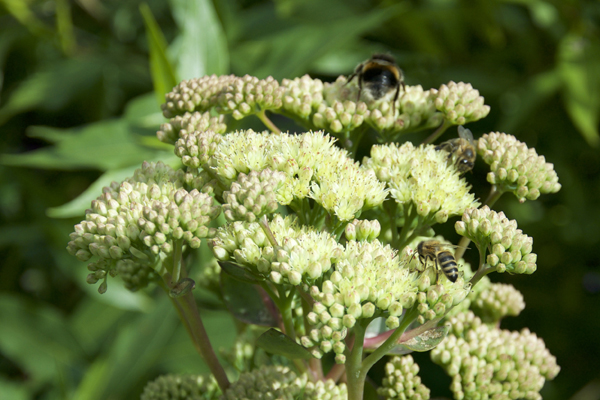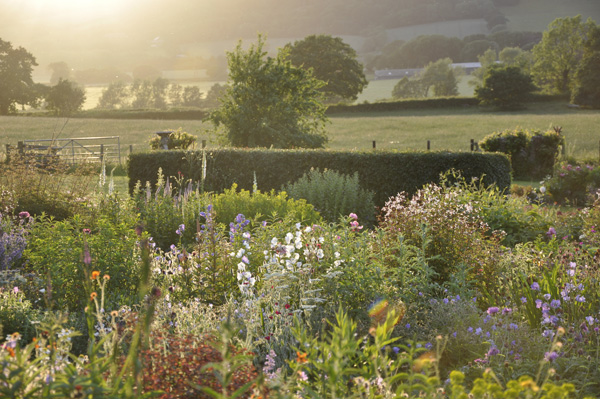Intersectional Peonies (Itoh) All You Need to Know
Of the different types of peonies, intersectional peonies are hardy perennials that have the best characteristics of all. The flowers and foliage are in perfect proportion to one another, taking the best from each of the parents, the tree (woody) and herbaceous peony.
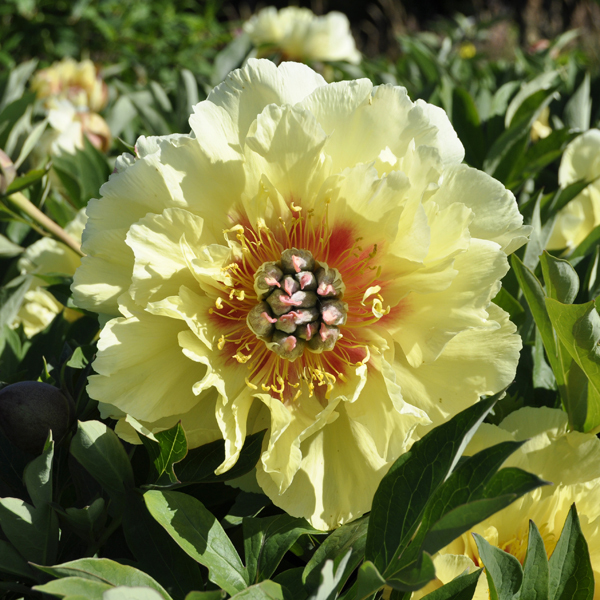



Above: Paeonia 'Garden Treasure', P. 'Chief Blackhawk, P. 'Cora Louise', Paeonia 'Julia Rose'
When do Intersectional Peonies Bloom?
Itoh peonies bloom at the same time as herbaceous peonies (from early to late June). Intersectional peonies have so many buds they are in flower for longer than most herbaceous peonies. This can be for up to 3 weeks or more. The flowers are big, and generally semi-double. They open from large, beautifully shaped buds into deep bowls that loosen as the flower ages.
The blooms are sterile, which means they do not produce seeds, but the large furry seed pods, despite being empty of seeds, are very attractive. At night, each flower closes up for protection, helping it to last longer. A bloom can last as long as 5 days, and have many lower side buds. Overall, an intersectional peony can be in flower for up to 4 weeks, some 2 weeks longer than other types of peonies. I have also found a few varieties, such as P. ‘Bartzella’ producing the odd flower in the autumn.
Intersectional Peony Leaves & Appearance
In shape and growth, Itoh peonies look more like a herbaceous peony than a tree peony. Short in stature, most varieties form a dense mound. The leaves are large, leathery, deeply divided and glossy or mat in texture. They are carried on smooth woody stems and in autumn, long after the leaves of herbaceous peonies have shrivelled into a crumpled mess, they turn red then simply and elegantly drop off.
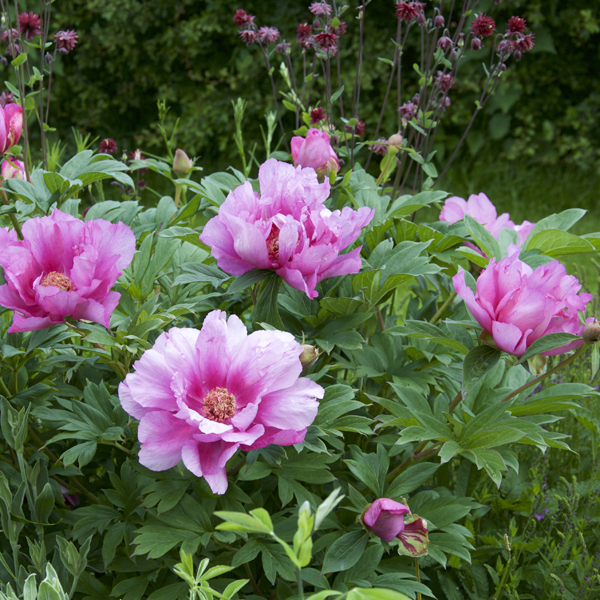
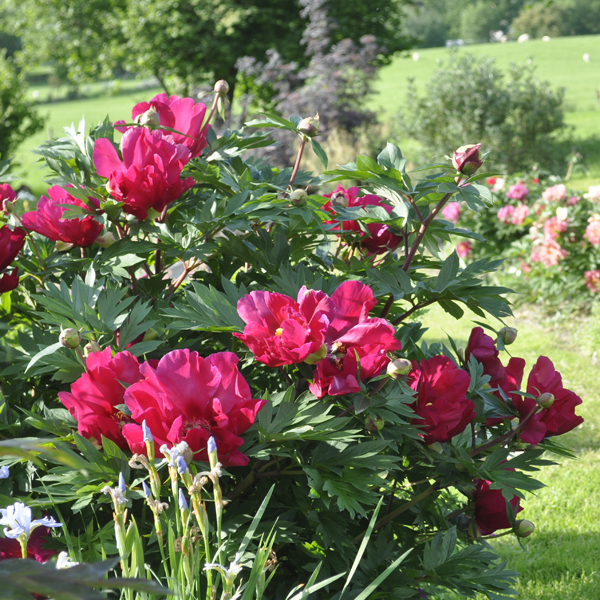
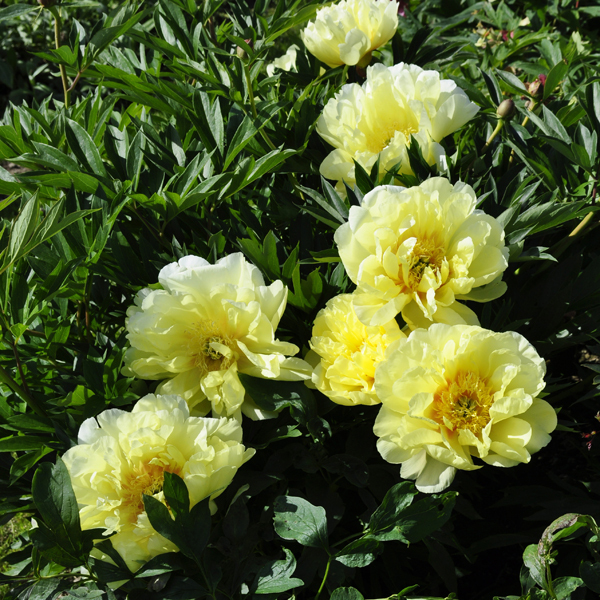
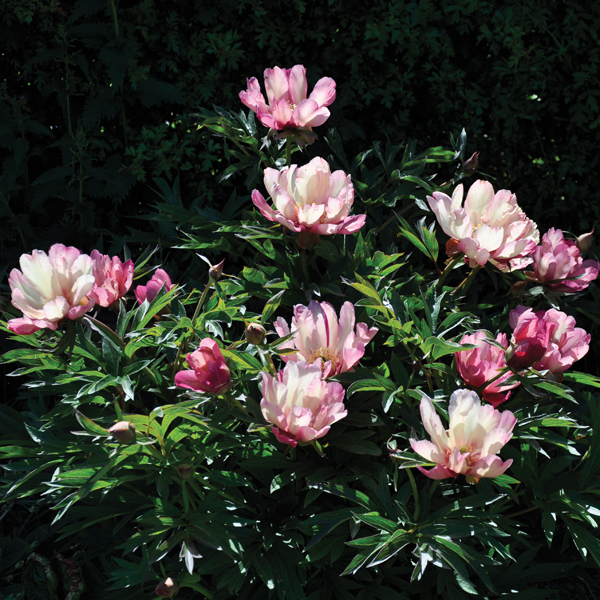
Above: Paeonia 'First Arrival', P. 'Unique', P. 'Bartzella', P. 'Julia Rose'
Where do Intersectional Peony Plants Come From?
A Japanese breeder, Dr. Toichi Itoh, first developed these hybrid hardy perennials in the 1940s. Before the 1940’s the only peonies to produce yellow flowers were those of woody tree peonies, such as Paeonia lutea, or the fleetingly beautiful herbaceous peony P. mlokosewitschii.
Dr. Toichi Itoh began working to change this by crossing the two types of peonies, herbaceous and tree. His aim was to create a truly yellow, double-flowered herbaceous peony. Eventually, after thousands of crosses he raised just 36 yellow seedlings. In 1964 these bloomed yellow and double, but sadly Dr. Itoh never saw his achievement as he died in 1956.
He must have realised that his creations were entirely unique. In appearance, they grew like herbaceous peonies, short and mounding, but they also had short woody, tree peony-like stems. His plants did not disappear as they were taken to American peony shops and nurseries, where in 1974 six were introduced with names like ‘Yellow Crown’ and ‘Yellow Emperor’. This new peony group was named Itoh peonies after their creator. As more varieties have appeared over the years, intersectional peony has superseded the name.
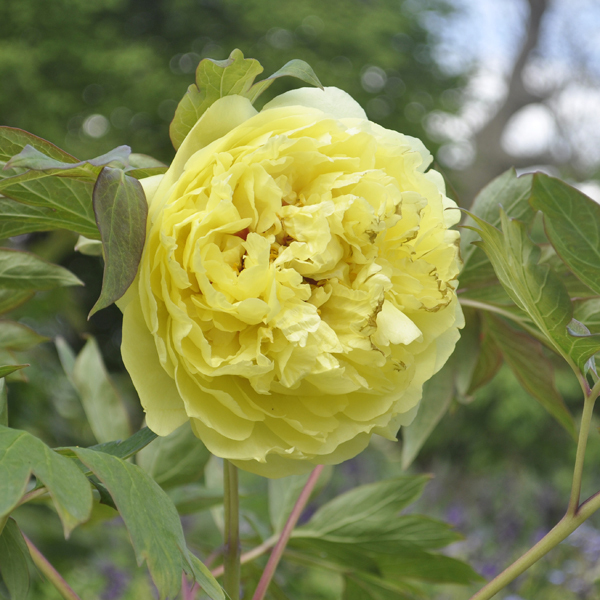

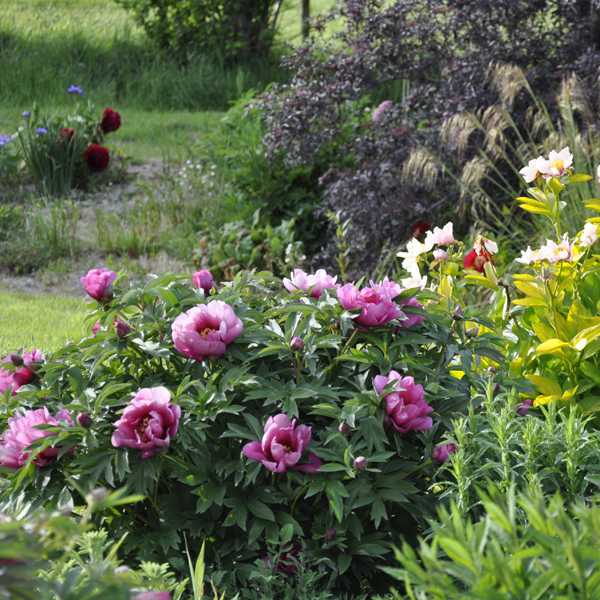
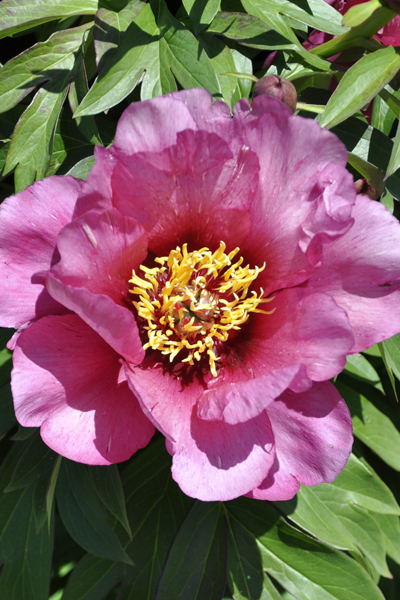
Paeonia 'Yellow Crown', a border of Intersectioanl peonies, Paeonia 'Yankee Doodle Dandy in bush and flower
Claire Austin Intersectional Peonies
I have my own personal history with the Itoh peony. I acquired my first intersectional peonies in the late 1980’s. They were called the ‘Yellow’ series, but sadly many did not grow well, when they did, they were short and stumpy with Japanese tree peony-like leaves and downward facing flowers. Not quite the hardy perennials I had been expecting.
In 2001 Don Hollingworth, based in the US, sent me a specimen of Paeonia ‘Garden Treasure’. It arrived looking like a twig, but much to my astonishment two years later the plant had grown into a glorious mound topped with 13 beautiful big, semi-double, lemon-yellow flowers.
This convinced me that intersectional peonies would be the future of peonies. Since then, I have been cultivating them in my plant nursery, if you’re looking to buy peony plants, I have a beautiful selection available for purchase and delivery.
Intersectional peonies can now be found in a wider range of colours than other peony group. Ranging from red, pink, apricot, yellow and white, some start one colour and morph to another. However, because they are still reasonably new, most are quite expensive compared to other peony varieties.
Intersectional Peony Planting Guide
Where To Grow Intersectional Peonies
Intersectional peonies will grow in the same conditions as herbaceous and tree peonies, which is a well-drained soil that ranges from neutral to slightly acid. They prefer full sun, but will grow in a situation that has a little shade for part of the day.
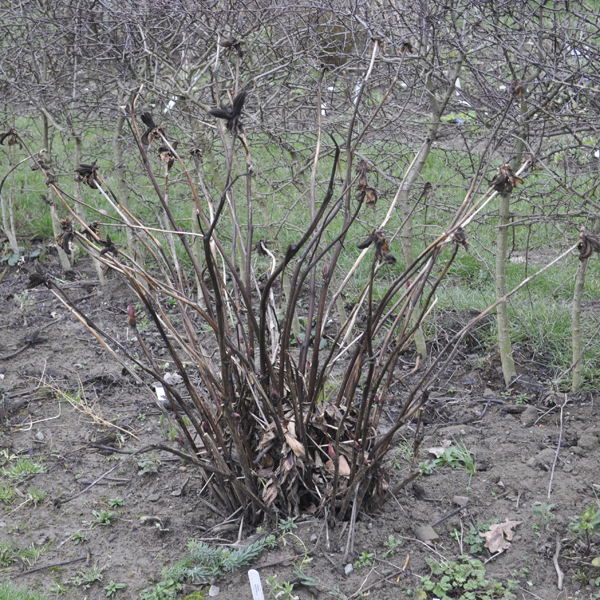
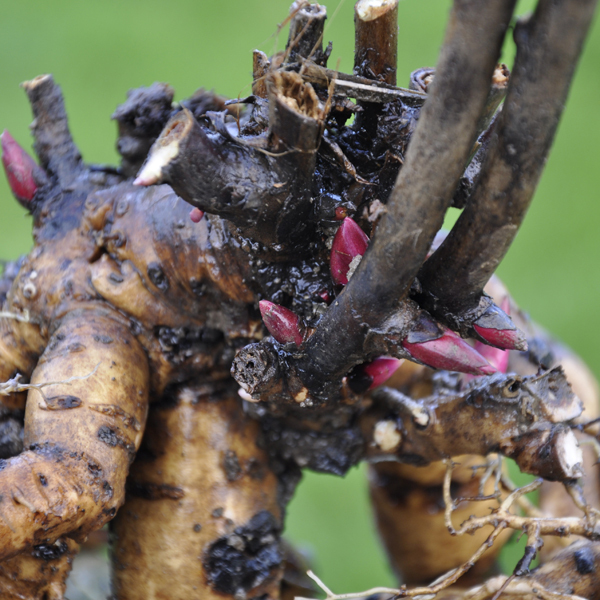

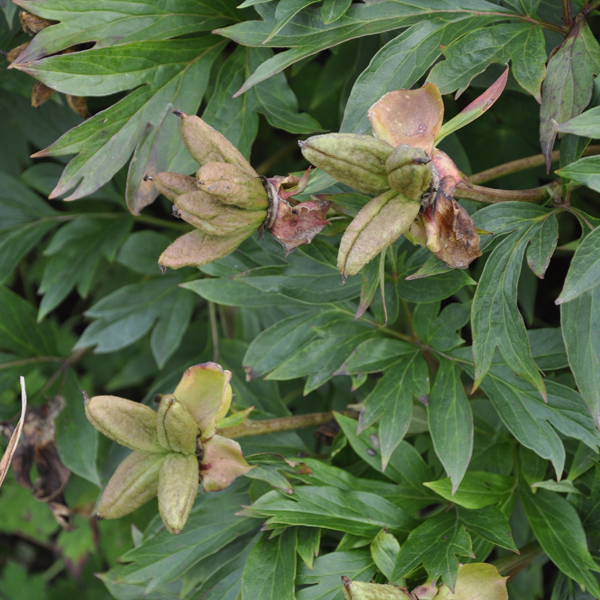
An untrimmed Intersectional peony in winter; the eyes of an intersectional peony sit just below the old leaf and flower stems; leaf buds start to emerge early in spring; seed pods are either empty or, if there are seeds, not viable.
How To Plant Intersectional Peonies
When you buy peony plants, most of the time they will be sold as bare rooted plants. They need to be placed in the ground with the red eyes (leaf buds) no more than 5cm below the soil surface.
Itoh Peony Care Guide
Pruning
These are as easy to grow as any other herbaceous peony. They require no fertiliser or staking, and only need dividing if they are too big for the spot they are growing in. If you need to do this, lift the plant with a good spade or fork and divide using a saw to cut through the crown. Unlike most peonies, in autumn the leaves simply and neatly drop off the plant revealing the woody stems. Depending on whether they produce new red leaf buds in spring or not, I cut the dead woody growth back to the ground. If there are new buds on the stem, I cut the stems back to these swelling bud as I’ve discovered in some years they are capable of producing a few flowers not just in June, but in early autumn.
Pests
So far I have not found them to suffer any diseases, including Peony Wilt, on any of the varieties we grow for our peony shop. Still, always keep an eye out for fungus or powdery mildew growing.
In regard to animal pests, Mealybugs are small, white, woodlouse-like insects that may target new growth. While you may spot a number of ants on the bud, they will not damage the plant and will leave when the bud opens.
